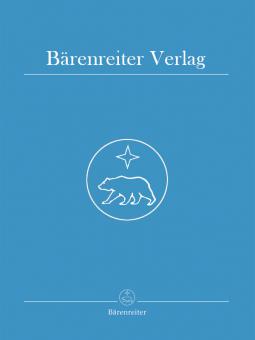Gioacchino Rossini
Petite Messe solennelle
Gioacchino Rossini
Petite Messe solennelle
- Compositor Gioacchino Rossini
-
Dificultad
- Editorial Bärenreiter Verlag
- Nº de pedido BA10501-91
IVA incluido.,
Más gastos de envío
No disponible en todos los países. Leer más
Descripción de la:
> Choral score based on the Urtext of the series 'Works of Gioachino Rossini'
> Supplements the already existing material available to this work
The 'Petite Messe solennelle' is the finest work of Rossini's late years. He composed it between 1863 and 1864 at the age of 71 as a commission for Countess Louise Pillet -Will for the consecration of her private chapel, where the work received its first performance in March 1864. Together with the 'Stabat mater', the mass is one of the composer's mostimportant sacred works.
The unusual instrumentation with two pianos and harmonium is entirely in keeping with the Neapolitan keyboard tradition of the 18th century which was cultivated in France in Rossini's day. It forms a distinct contrast to the style of large-scale sacred compositions as written by, for example, Liszt and Bruckner. Rossini explained that he wrote the later orchestral version of the work dating from 1867 out of concern that if he did not do this, other composers might orchestrate the mass too heavily in later arrangements.
> Supplements the already existing material available to this work
The 'Petite Messe solennelle' is the finest work of Rossini's late years. He composed it between 1863 and 1864 at the age of 71 as a commission for Countess Louise Pillet -Will for the consecration of her private chapel, where the work received its first performance in March 1864. Together with the 'Stabat mater', the mass is one of the composer's mostimportant sacred works.
The unusual instrumentation with two pianos and harmonium is entirely in keeping with the Neapolitan keyboard tradition of the 18th century which was cultivated in France in Rossini's day. It forms a distinct contrast to the style of large-scale sacred compositions as written by, for example, Liszt and Bruckner. Rossini explained that he wrote the later orchestral version of the work dating from 1867 out of concern that if he did not do this, other composers might orchestrate the mass too heavily in later arrangements.


